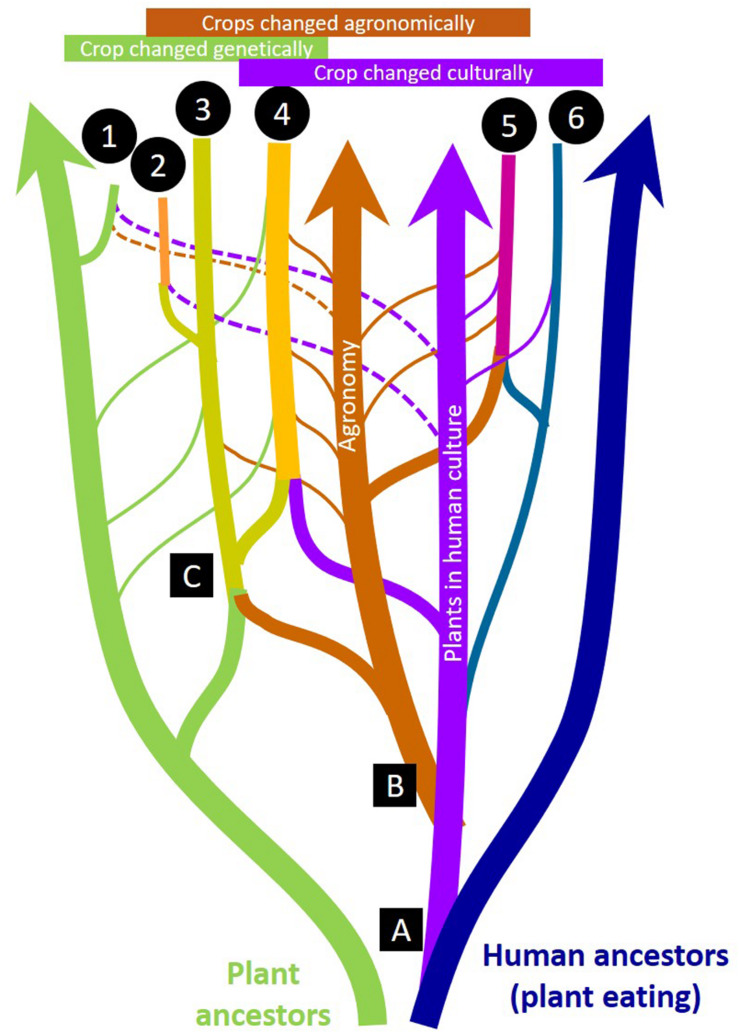FIGURE 2.
Genetic, agronomic, and cultural changes are co-evolutionarily entangled in crop domestication. A reticulate biological/cultural “evolutionary tree” is shown in cartoon form (not to scale) to illustrate how “lineages” of plants, agronomic technology/traditions, and inherited human ethnobotanical culture “hybridize” to create different kinds of crops: (1) De novo incipient new crops from wild plants by breeding or gene editing (e.g., silphium), (2) New food crops developed from non-food crops by breeding or gene editing (e.g., intermediate wheatgrass), (3) Forage, fiber, and energy crops (e.g., alfalfa), (4) Major world food crops (e.g., maize, rice), (5) Cultivated crops with little genetic change (e.g., cranberry), (6) Culturally important wild-crafted food and medicinal plants (e.g., ‘akkoub). Major evolutionary innovations are numbered: (1) Cultural references to plants (names, stories, recipes, etc.) appear, (2) Agronomic practices appear, (3) Genetically distinct cultigens appear. Narrow lines show “horizontal” influences such as accidental or deliberate gene flow between cultigens and wild relatives (narrow green lines) or changing cultural uses of harvested plants (narrow purple lines) or the influence of new agronomic practices and technologies (narrow brown lines). Dotted narrow lines indicate a very recent or emerging influence.

